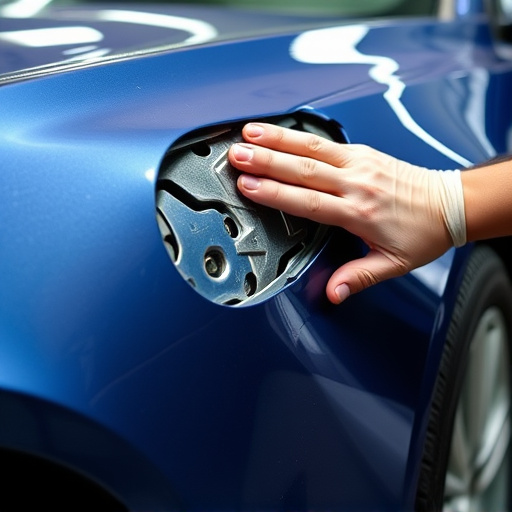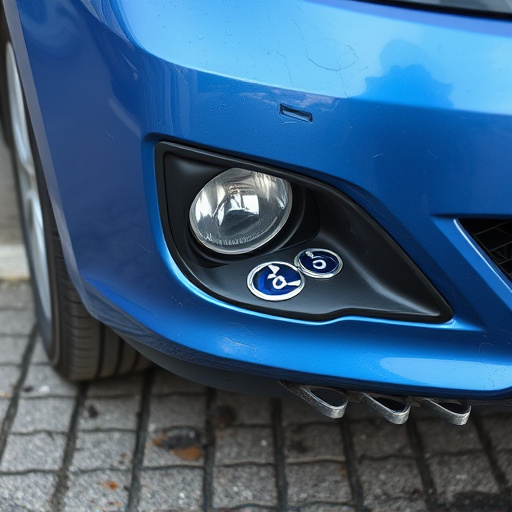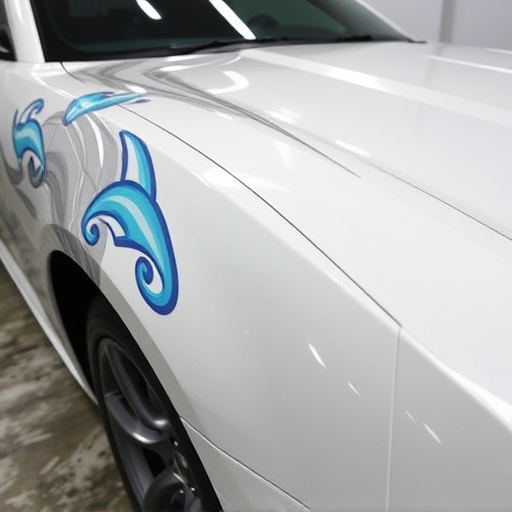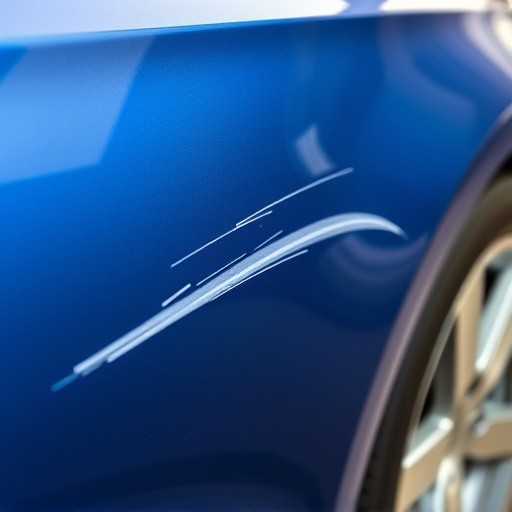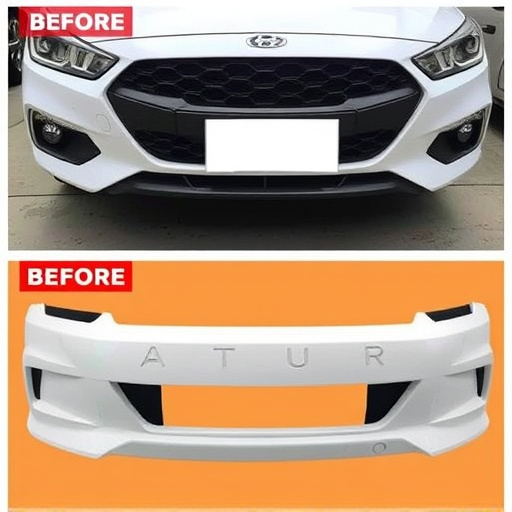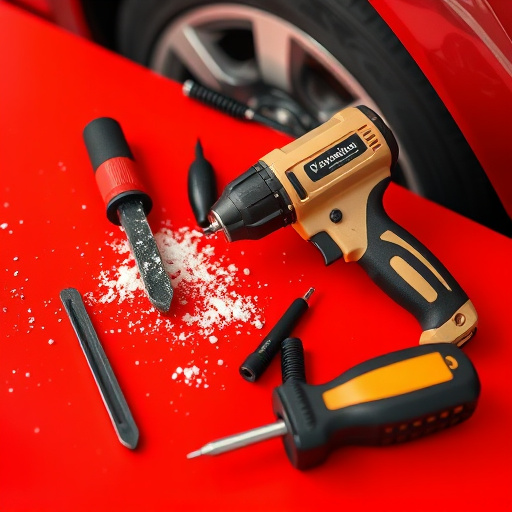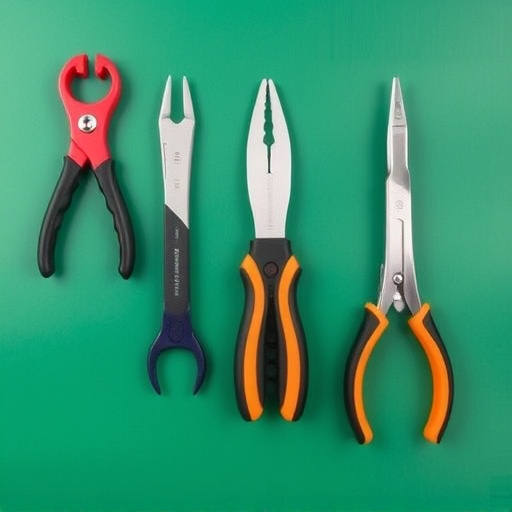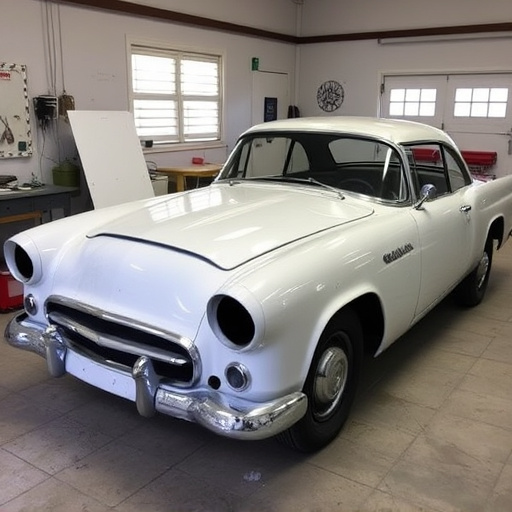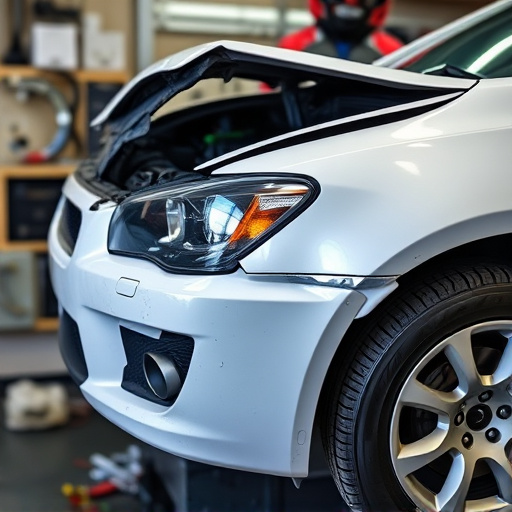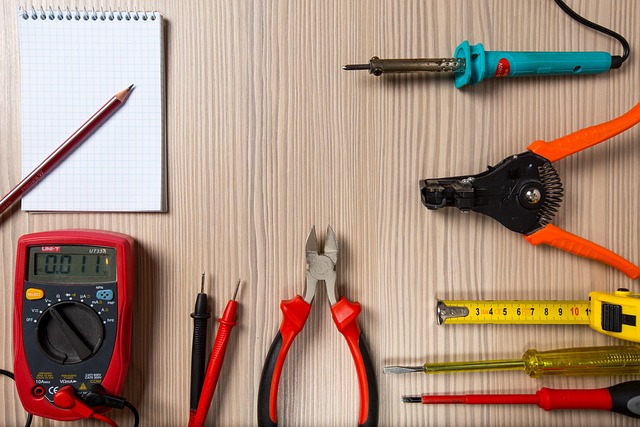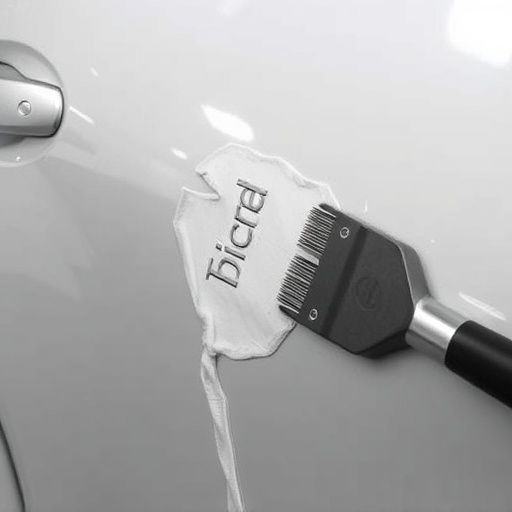Technology significantly enhances snow-related crash repair processes, from ADAS preventing accidents to CAD and 3D printing optimizing post-crash repairs. Advanced sensors, data analytics, and remote expert systems streamline on-site damage assessment and mechanic guidance. Future-proofing fleets involves embracing telematics for real-time weather data and innovative vehicle designs improving stability in snowy conditions, minimizing risk of accidents.
In regions where winters bring heavy snowfall, technology plays a pivotal role in enhancing safety and streamlining snow-related crash repair processes. This article delves into three key areas: Enhancing Safety through advanced tech solutions for snowy roads, Efficient Repairs by exploring innovations in crash site management, and Future-Proofing Fleets with technologies for cold weather resilience. By leveraging these advancements, communities and fleets can better navigate hazardous winter conditions, ultimately reducing the impact of snow-related crashes.
- Enhancing Safety: Tech's Impact on Snowy Roads
- Efficient Repairs: Innovations in Crash Site Management
- Future-Proofing Fleets: Technology for Cold Weather Resilience
Enhancing Safety: Tech's Impact on Snowy Roads
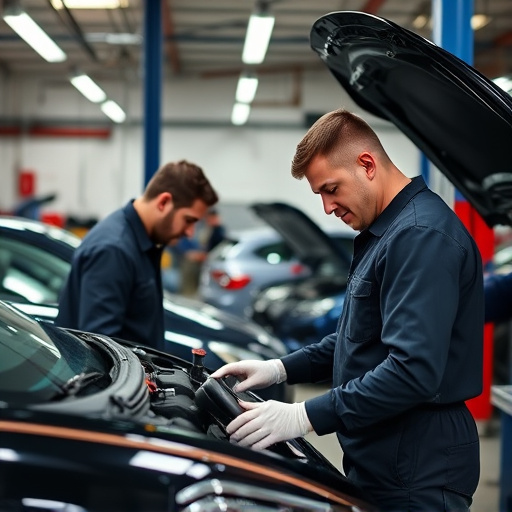
Technology has significantly enhanced safety on snowy roads, a factor crucial for mitigating snow-related crash repairs. Advanced driver assistance systems (ADAS), such as anti-lock braking and electronic stability control, help drivers maintain control during slippery conditions. These technologies detect and respond to skidding, preventing accidents or reducing their severity. Additionally, real-time weather data and GPS-enabled navigation systems provide drivers with crucial information about road conditions ahead, allowing them to adjust their speed and route accordingly.
Integrated vehicle-to-vehicle (V2V) communication further improves safety by enabling cars to exchange data on speed, direction, and brake status, creating a network of aware vehicles. For post-crash scenarios, modern auto body repair shops leverage technology like computer-aided design (CAD) for precise measurements and 3D printing for custom parts, ensuring high-quality repairs faster. Even tasks such as car dent removal are streamlined with laser technology, offering accuracy and efficiency compared to traditional methods. These technological advancements not only enhance overall safety but also optimize snow-related crash repair processes, turning what was once a challenging task into a more manageable one for both drivers and auto body repair professionals alike, like those specializing in Mercedes Benz collision repair.
Efficient Repairs: Innovations in Crash Site Management
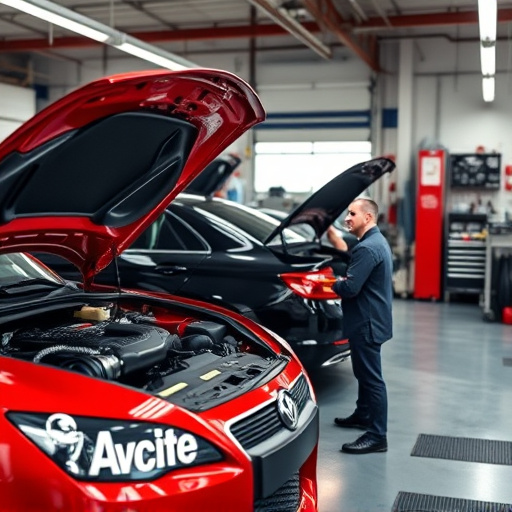
Technology has significantly transformed snow-related crash repair processes, enabling efficient and faster responses to hazardous road conditions. Innovations in crash site management have revolutionized how auto repair shops handle such incidents. With advanced sensors and data analytics, rescuers can now quickly assess damage and plan repairs more effectively. This real-time information exchange allows for optimized workflows at the scene and facilitates seamless transitions to specialized automotive restoration services.
For instance, modern fender repair techniques leverage digital design tools and 3D printing, reducing traditional labor-intensive methods. These advancements ensure that damaged vehicle components are precisely replicated, minimizing downtime and enhancing overall customer satisfaction. Moreover, remote expert systems enable experienced mechanics to provide guidance during complex repairs, even when they’re not physically present at the crash site.
Future-Proofing Fleets: Technology for Cold Weather Resilience
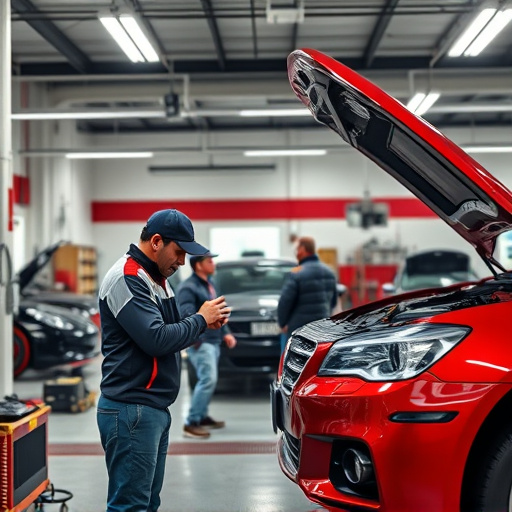
As winter weather becomes increasingly unpredictable, future-proofing fleets against snow-related crash repairs is paramount for businesses and organizations reliant on transportation. Investing in technology designed for cold-weather resilience offers a proactive approach to minimizing downtime and costs associated with icy road conditions.
Advanced telematics systems, for instance, can provide real-time data on weather patterns and road conditions, allowing fleet managers to route drivers away from hazardous areas. Additionally, modern vehicle collision repair techniques incorporate innovative materials and designs that enhance a car’s grip and stability in snowy conditions, reducing the risk of accidents in the first place. These advancements in both technology and vehicle construction work hand-in-hand to create safer, more reliable fleets capable of navigating harsh winters effectively, ultimately streamlining vehicle body restoration processes post-crash.
Technology plays a pivotal role in improving safety and efficiency in snow-related crash repairs. From enhancing road conditions through advanced data analysis to implementing innovative solutions for crash site management, these advancements ensure quicker response times and more effective damage assessments. Furthermore, investing in technology that boosts cold weather resilience can future-proof fleets and minimize downtime during harsh seasonal changes. By leveraging these tech innovations, we can significantly reduce the impact of snow-related accidents on both safety and logistics.
